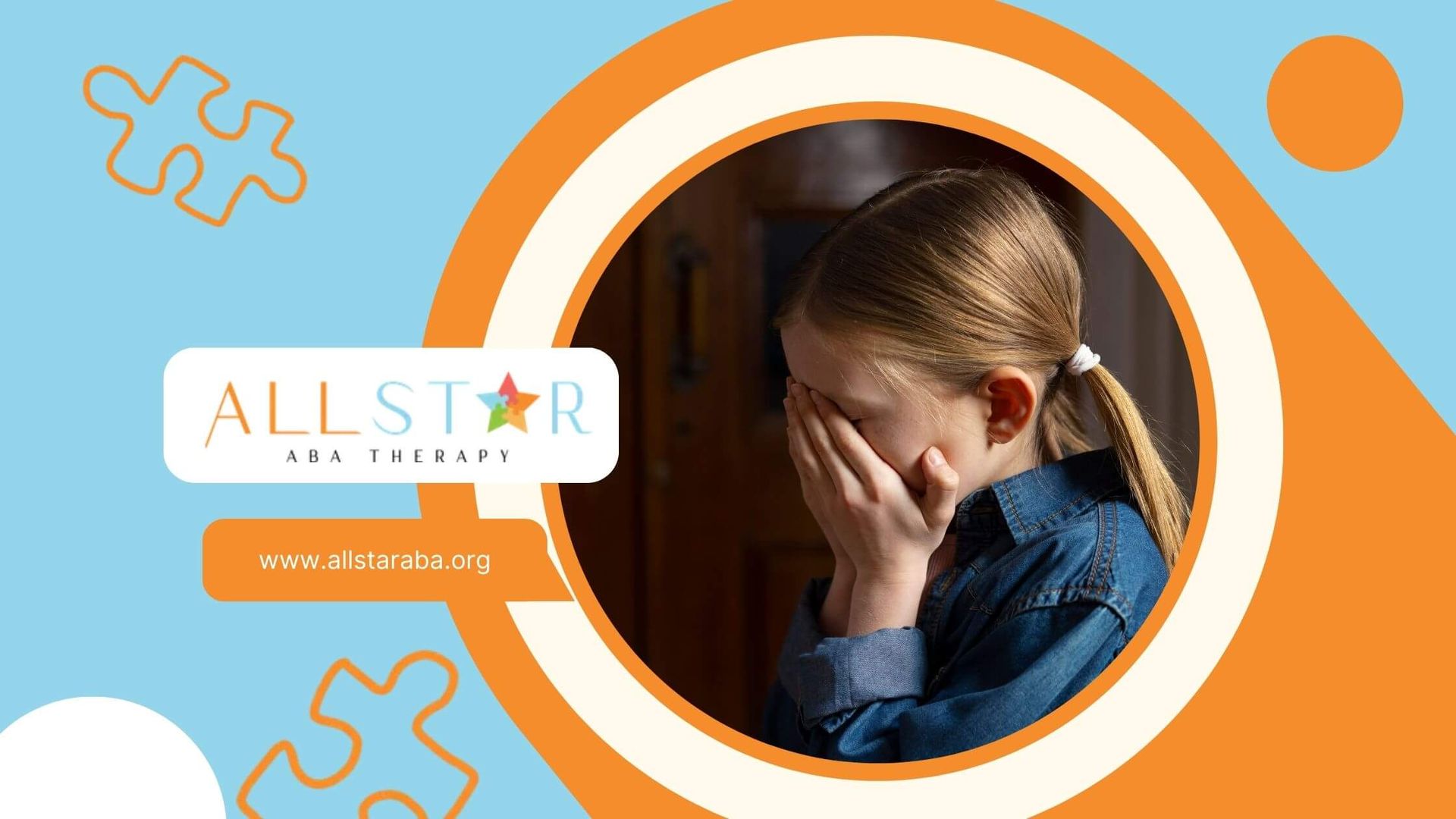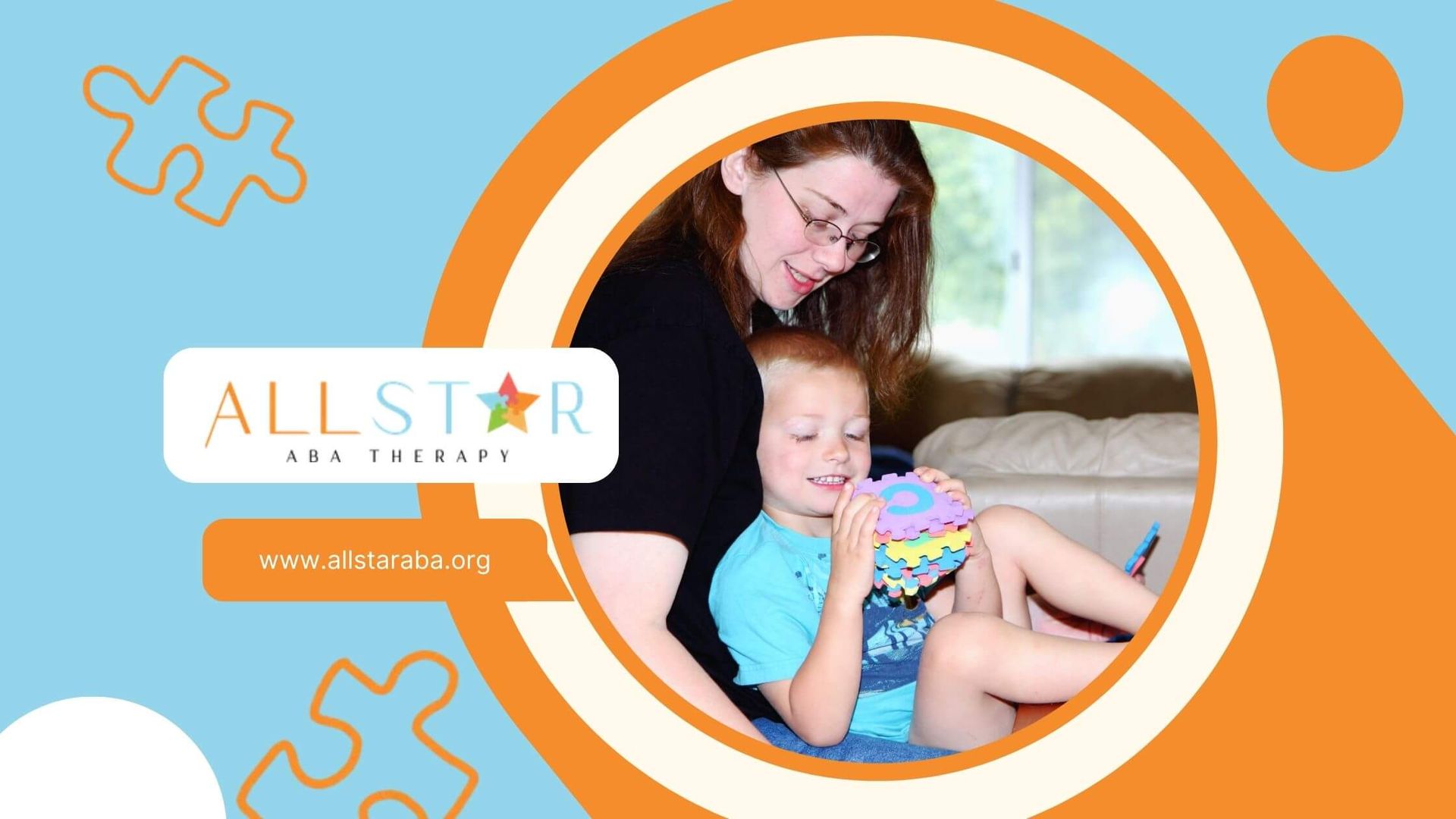New Paragraph
Demystifying Autism: Uncovering the Key Characteristics
Understanding Autism Spectrum Disorder
Autism Spectrum Disorder (ASD) is a complex neurodevelopmental condition that manifests in early childhood and continues throughout a person's life. This section aims to clarify what ASD is and how prevalent it is today, as well as the processes used for diagnosing the condition.
Defining ASD
ASD is characterized by a variety of symptoms and behaviors that can significantly impact social interaction, communication, and behavior. Individuals with ASD may exhibit difficulties in social communication, display repetitive behaviors, and have unique sensory sensitivities. The spectrum nature of the disorder implies that the severity and presentation of these characteristics can vary greatly from one individual to another. ASD is not defined by a single symptom but rather a constellation of features that affect individuals differently.
To learn more about the condition, including detailed descriptions of symptoms and behaviors, visit What is autism?.
Prevalence and Diagnosis
ASD has been identified in individuals across all ethnic, racial, and socioeconomic groups. Recent studies have indicated an increase in the prevalence of autism, with estimates suggesting that approximately 1 in 54 children in the United States is diagnosed with ASD.
The process of diagnosing ASD is comprehensive and involves the observation of behaviors and impairments in line with the criteria set forth by the Diagnostic and Statistical Manual of Mental Disorders, 5th Edition (DSM-5). This standardized framework ensures consistent diagnosis and helps healthcare professionals identify autism in individuals, paving the way for early and effective interventions.
| United States | Prevalence Estimate |
|---|---|
| Children | 1 in 54 |
Understanding the prevalence of ASD underlines the importance of recognizing autism symptoms in children and the need for early intervention for autism, which has been shown to improve outcomes in communication, social skills, and cognitive abilities. With the right support, including ABA therapy for autism, education plans, and community resources, individuals with ASD can lead fulfilling and independent lives.
Characteristics of Autism
Autism Spectrum Disorder (ASD) is a complex developmental condition that involves a range of symptoms and variations in severity. Understanding the characteristics of autism is crucial for early identification and intervention, which can significantly improve outcomes for individuals with ASD.
Social Communication Challenges
Individuals with ASD often face significant challenges in social communication, which can manifest in various ways across different contexts. They may struggle with initiating and maintaining conversations, understanding and using nonverbal communication cues such as facial expressions, tone of voice, and body language, and may find it difficult to develop, maintain, and understand relationships.
| Communication Challenge | Description |
|---|---|
| Initiating Communication | Difficulty in starting interactions or conversations |
| Maintaining Conversations | Challenges in keeping a conversation going |
| Understanding Nonverbal Cues | Difficulty interpreting gestures, facial expressions, and tone |
| Social Relationships | Struggles with making friends and interpreting social cues |
These communication issues can lead to misunderstandings and social isolation. Therefore, it is essential for parents, educators, and therapists, including those practicing ABA therapy for autism, to recognize these challenges and provide appropriate support.
Repetitive Behaviors and Interests
A hallmark feature of ASD is the presence of repetitive behaviors and restricted interests. Individuals with autism may engage in repetitive motions such as rocking or hand-flapping, show a strong attachment to specific routines or rituals, and have intense interests in particular subjects. These behaviors can provide comfort and predictability but may also interfere with day-to-day functioning.
| Behavior | Description |
|---|---|
| Repetitive Movements | Engaging in actions like rocking or spinning |
| Routines and Rituals | Insistence on following specific patterns or schedules |
| Intense Interests | Preoccupation with certain topics or objects |
Understanding these behaviors can guide the development of tailored interventions, including behavioral strategies found in ABA therapy, to support individuals in expanding their interests and coping with changes in routines.
Sensory Sensitivities
Sensory sensitivities are common among individuals with autism, affecting how they experience their environment. They may be hypersensitive or hyposensitive to sensory input, leading to reactions that might seem unusual or intense to others. For instance, a person with ASD might be overwhelmed by loud noises, dislike being touched, or have specific food preferences based on texture.
These sensitivities can influence behavior and can lead to heightened anxiety, stress, or avoidance of certain environments. Recognizing these sensitivities is critical in creating supportive and accommodating environments for individuals with ASD.
| Sensory Experience | Hypersensitivity | Hyposensitivity |
|---|---|---|
| Auditory | Overwhelmed by loud noises | May not respond to sounds |
| Tactile | Dislikes being touched | Seeks out tactile experiences |
| Gustatory | Picky eating due to texture | May eat non-food items (pica) |
For parents and professionals, it is important to note these sensory differences when considering early intervention for autism and when creating educational or therapeutic plans.
The characteristics of autism are varied and can present differently in each individual. Understanding these characteristics helps in recognizing autism symptoms in children and in providing the necessary support through tailored interventions and therapies. It's important to approach each individual holistically, respecting their unique experiences and needs.
Early Intervention and Importance
The significance of early detection and intervention in the management of Autism Spectrum Disorder (ASD) cannot be overstated. It is a foundational step toward enhancing the developmental trajectory and quality of life for individuals with ASD.
Identifying Autism Early
Identifying ASD at the earliest possible stage is critical. Autism can be detected as early as 18 months of age. However, the average age of diagnosis tends to be around four years old, often delaying the commencement of intervention strategies that could be beneficial. Recognizing the characteristics of autism and symptoms in children is vital for parents, educators, and healthcare providers.
Research indicates that early intervention can lead to notable progress in language, communication, and social skills. These improvements are key factors in the overall outcomes for individuals with ASD. It's important for caregivers to be aware of the early signs of autism and to seek professional guidance promptly. For more information on the early signs and symptoms, visit our page on What is autism?.
Impact of Early Therapy
The impact of early therapy on the development of children with autism is profound. According to the CDC, children who receive early intensive behavioral intervention (EIBI), a type of ABA therapy for autism, demonstrate significant enhancements in their communication abilities, social participation, and cognitive skills.
| Age of Identification | Benefits of Early Intervention |
|---|---|
| 18+ months | Improved language skills |
| 2-3 years | Enhanced social interaction |
| 4+ years | Increased cognitive abilities |
While ASD is a lifelong condition, the provision of early intervention services, such as behavioral and educational therapies, can greatly improve the development and quality of life for individuals with autism. The approach to intervention is often tailored to each individual's needs but generally includes a combination of ABA therapy, speech therapy, occupational therapy, and sometimes medication management. These services are designed to support the individual's unique abilities and challenges.
To explore the specific benefits and strategies of early intervention, families and professionals can visit the section on early intervention for autism. By engaging with early intervention services, the potential for an individual with autism to lead a fulfilling and productive life is greatly enhanced.
ABA Therapy in Baltimore
Applied Behavior Analysis (ABA) therapy is an esteemed and evidence-based approach to understanding and improving behaviors in individuals with Autism Spectrum Disorder (ASD). In Baltimore, ABA therapy is a critical resource for families and individuals dealing with the characteristics of autism. This section details the principles of ABA therapy and its application to foster social and communication skills.
Principles of ABA Therapy
ABA therapy is grounded in the science of learning and behavior, with a focus on how behaviors change or are affected by the environment, as well as how learning takes place. The foundational principle of ABA therapy is that desired behaviors can be taught through a system of rewards and consequences.
Key components of ABA therapy include:
- Assessment: Understanding the individual's current behavior patterns and the factors influencing them.
- Intervention: Implementing strategies to improve social, communication, and learning skills.
- Measurement: Evaluating the effectiveness of the intervention on behavior changes.
- Adjustment: Tailoring the approach based on assessment and measurement outcomes to better meet the individual's needs.
According to the CDC, ABA therapy applies interventions derived from behavioral principles to systematically modify behavior. These interventions are designed to significantly improve positive behaviors and reduce those that may interfere with learning or social interaction.
ABA for Social and Communication Skills
One of the primary goals of ABA therapy is enhancing social and communication skills in individuals with autism. Social skills are crucial for navigating day-to-day interactions and building relationships, while communication skills enable individuals to express their needs, preferences, and emotions.
ABA therapy can help individuals with ASD develop pivotal social skills, such as:
- Initiating and maintaining conversations.
- Understanding and responding to nonverbal cues.
- Recognizing and adhering to appropriate social norms.
For communication skills, ABA therapy may focus on:
- Language development, including vocabulary building and sentence structure.
- Speech articulation, ensuring clarity and accuracy of spoken language.
- Enhancing social communication abilities to interact effectively with others.
Both the CDC and Education Online emphasize that ABA therapy is highly individualized. It identifies the specific autism symptoms in children and adults and tailors interventions to address these unique challenges. With consistent ABA intervention, individuals with autism can make significant improvements in their ability to communicate and interact socially, which are key characteristics of autism.
ABA therapy's effectiveness in Baltimore is not an isolated case; it is a reflection of its global recognition as a leading treatment for ASD. Families and professionals in Baltimore and beyond can find ABA therapy to be an invaluable tool in the journey toward improved social interaction and communication for those on the autism spectrum. For those considering this therapeutic strategy, ABA therapy for autism provides more comprehensive information, and early intervention for autism highlights the critical importance of timely support.
Complementary Therapies for ASD
While Applied Behavior Analysis (ABA) therapy is widely recognized for its effectiveness in addressing autism symptoms in children, there are complementary therapies that can also significantly contribute to the overall development and well-being of individuals with Autism Spectrum Disorder (ASD). Speech and occupational therapy, as well as medication management, are critical components of a comprehensive treatment plan for ASD.
Speech and Occupational Therapy
Speech and occupational therapy are essential services for individuals with autism, focusing on enhancing communication skills and daily living activities. Speech therapy aims to improve an individual's ability to articulate words and express themselves effectively. Occupational therapy, on the other hand, equips individuals with the skills needed for daily tasks, such as dressing, eating, and working.
Speech Therapy
| Goals | Description |
|---|---|
| Language Development | Enhancing the ability to understand and use language. |
| Speech Articulation | Improving clarity of speech. |
| Social Communication Skills | Developing the skills needed for social interaction. |
Speech therapists work with individuals to overcome the social communication challenges often associated with the characteristics of autism. They employ a variety of techniques to aid language development and speech articulation, which are crucial for effective communication.
Occupational Therapy
| Focus Areas | Description |
|---|---|
| Fine Motor Skills | Boosting abilities like writing or buttoning. |
| Self-help Skills | Encouraging independence in personal care. |
| Sensory Integration | Assisting in managing sensory sensitivities. |
Occupational therapy is instrumental in addressing sensory sensitivities and offers strategies to manage these challenges. Occupational therapists play a pivotal role in helping individuals with autism navigate their environment more comfortably and perform everyday tasks with greater ease.
Medication Management
Medication management can be a crucial aspect of care for some individuals with autism, particularly those who have co-occurring conditions such as epilepsy, anxiety, or attention deficit hyperactivity disorder (ADHD). Medications are not a cure for autism but can help manage specific symptoms or related conditions that affect an individual's quality of life.
| Co-occurring Condition | Common Medications |
|---|---|
| Epilepsy | Anticonvulsants |
| Anxiety | Antidepressants |
| ADHD | Stimulants |
All medications should be prescribed by a qualified healthcare professional and closely monitored for effectiveness and potential side effects. It's important to note that medication needs can change over time, and regular consultations with a healthcare provider are essential to ensure optimal care.
The integration of speech and occupational therapy, alongside medication management when necessary, can profoundly impact the development and daily life of individuals with autism. These therapies complement the behavioral strategies employed in ABA therapy and are an integral part of early intervention programs. Tailoring these interventions to the unique needs of each individual can lead to significant improvements and support them in leading fulfilling lives.
The Spectrum of Autism
Autism Spectrum Disorder (ASD) encompasses a wide range of neurological and developmental differences. Recognizing the vast variation in individual experiences is crucial when discussing the characteristics of autism.
Variability in Abilities and Needs
Autism is often described as a spectrum due to the significant diversity in abilities and challenges individuals with ASD may face. Some individuals may have considerable intellectual disabilities, while others possess average or above-average intelligence. This range is reflected in the varying degrees of support required, from substantial assistance in daily activities to minimal support for those who are relatively independent.
| Aspect | Degree of Variation |
|---|---|
| Intellectual Ability | From profound disability to high intelligence |
| Social Communication | From nonverbal to subtle difficulties |
| Repetitive Behaviors | From highly disruptive to mildly inconvenient |
| Sensory Sensitivity | From intense reactions to mild annoyance |
Many individuals with ASD encounter challenges in understanding and navigating social norms and cues. They may have trouble recognizing appropriate social behaviors, such as sharing, conversational turn-taking, or respecting personal boundaries.
Sensory sensitivities are also a common trait among those with autism. These sensitivities can manifest as either an overreaction or underreaction to sensory stimuli, including sounds, textures, tastes, or smells. Such sensitivities often lead to increased anxiety or discomfort, particularly in environments that are not tailored to their sensory needs.
Tailoring Interventions for Individuals
Given the broad range of needs and skills, interventions for ASD must be personalized to each individual. Tailoring these interventions can optimize outcomes and improve the quality of life for those on the spectrum. For instance, early intervention for autism can be pivotal in fostering developmental progress and enhancing life skills.
Intervention services such as behavioral therapies, including ABA therapy for autism, and educational programs, are designed to address the specific symptoms and challenges individuals with ASD face. These services can significantly aid in the development of communication, social skills, and adaptive behaviors.
It's important to assess each person's unique profile of strengths and challenges when designing intervention plans. This can include considering the individual's intellectual level, the severity of their social communication difficulties, the nature of their repetitive behaviors, and the degree of their sensory sensitivities.
Autism is a lifelong condition, but with the right support, individuals can lead fulfilling lives. Services must be adaptable and evolve with the individual as they grow and their needs change. The goal is not to "cure" autism but to provide the necessary support to enable individuals to lead their best possible lives. For more details on autism symptoms and intervention, explore our resources on autism symptoms in children.
Conclusion
Autism Spectrum Disorder (ASD) is a complex, lifelong condition that affects individuals in various ways, with a wide range of abilities and challenges. Early detection and intervention are key to improving the quality of life for those with autism. Recognizing the social communication difficulties, repetitive behaviors, and sensory sensitivities that characterize autism helps create personalized and effective treatment plans, including therapies like ABA, speech, and occupational therapy.
By understanding the spectrum of autism, including its variability in abilities and needs, we can provide better support tailored to each individual. With the right interventions, children and adults with ASD can improve their communication, social skills, and ability to navigate the world around them. The goal is not to change who they are but to empower them to lead fulfilling and independent lives.
As awareness and understanding of autism continue to grow, it is essential to keep providing accessible, early, and individualized interventions to ensure those with autism receive the support they deserve. For more information on autism and early intervention, visit our resources on autism symptoms and treatment strategies.
At All Star ABA, we believe every child and adult with autism deserves personalized support to thrive. Our in-home ABA therapy in Maryland and Virginia that empowers individuals to build communication, social, and daily living skills while supporting families with proven strategies.
Begin a journey toward independence, confidence, and brighter futures. Contact us again!
Frequently Asked Questions
What are the early signs of autism in children?
Early signs may include delayed speech, limited eye contact, repetitive behaviors, and difficulty with social interaction. Recognizing these signs early allows families to seek evaluation and begin interventions sooner.
Why is early intervention important for autism?
Early intervention provides structured support during critical developmental years. ABA therapy helps children build communication, social, and adaptive skills, improving long-term outcomes and independence.
How does ABA therapy support individuals with autism?
ABA therapy uses evidence-based strategies to teach practical skills, reduce challenging behaviors, and promote independence. It is tailored to each individual’s needs, making it one of the most effective approaches for supporting children and adults with autism.
SOURCES:
https://autism.org/screening-assessment/
https://educationonline.ku.edu/community/social-difficulties-in-autism-spectrum-disorder
https://www.nichd.nih.gov/health/topics/autism/conditioninfo/treatments
https://www.cdc.gov/ncbddd/autism/treatment.html
Need Support?
We're Here to Help!
Our experienced team is ready to assist you. Reach out today to discuss how we can support your child's development and well-being.
Get started with expert ABA therapy today.








